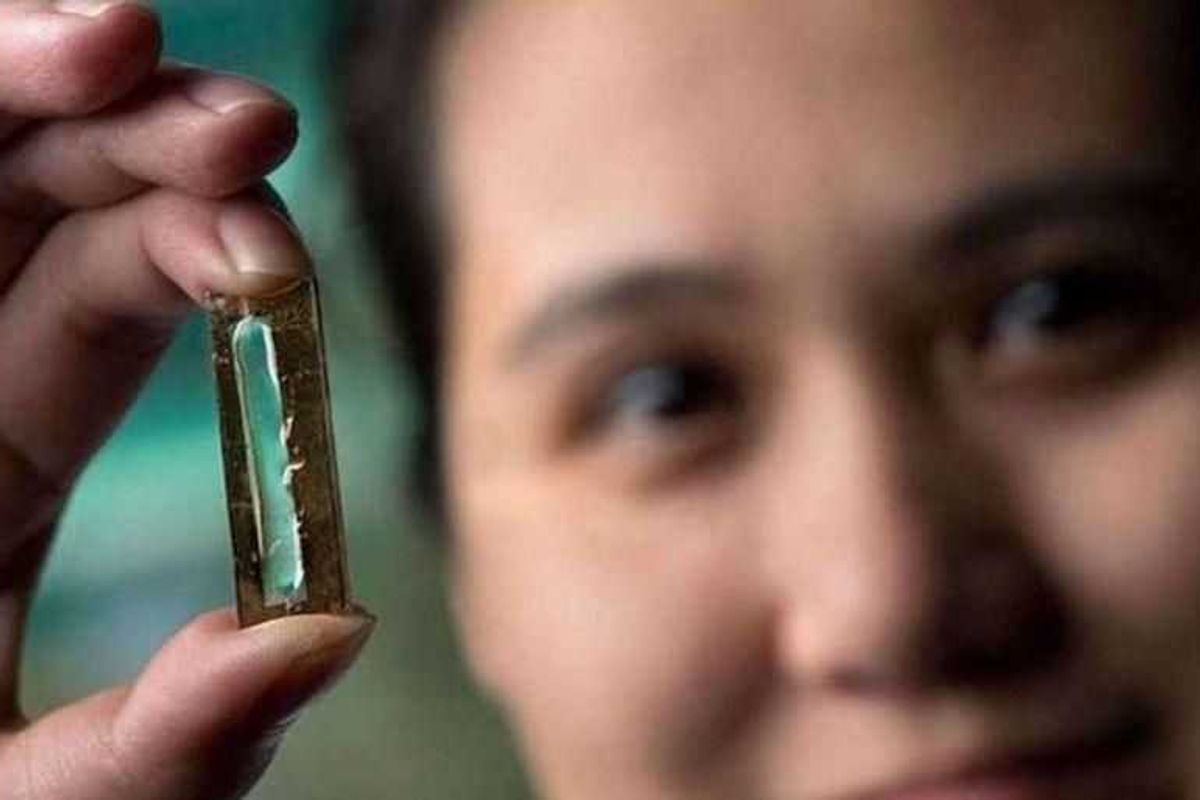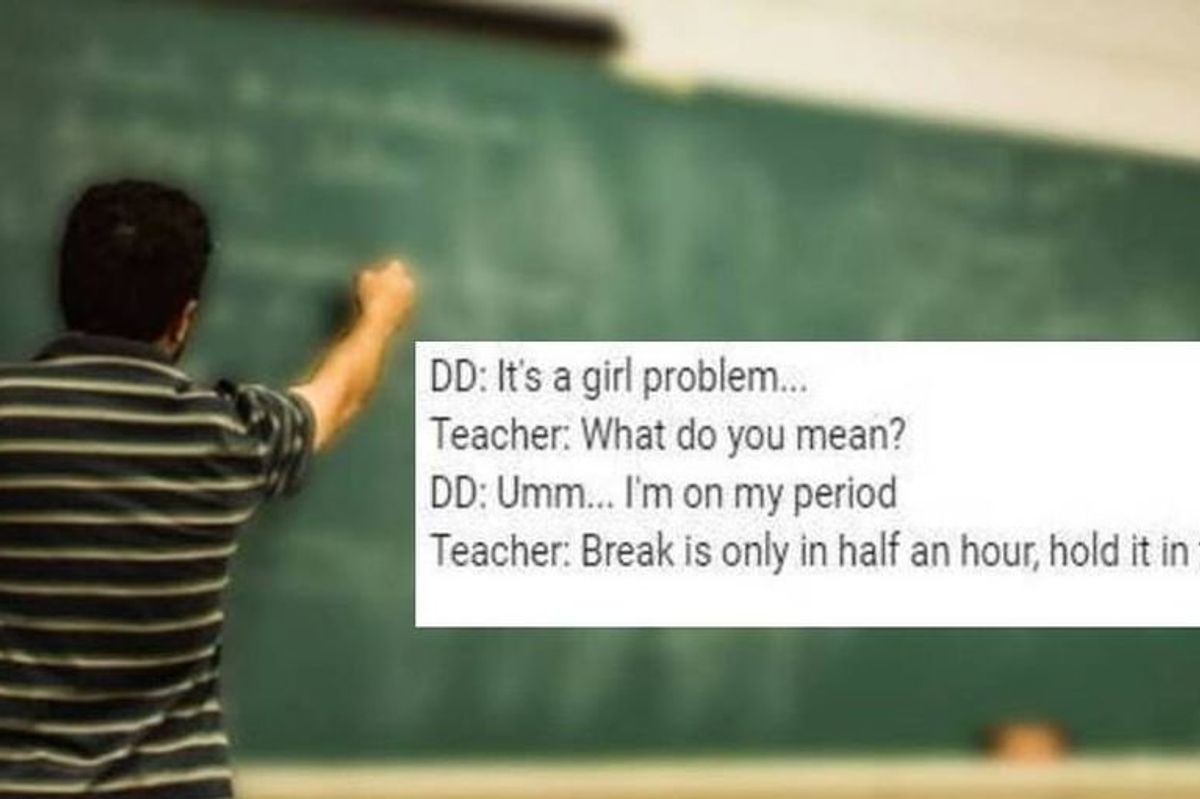Woman shows off her Costco badge after a 3-month job search and critics quickly get schooled
Apparently some people didn't realize what a win it is to work at Costco.

Working at Costco is nothing to mock.
As the adage goes, there's an exception to every rule, and the exception to the rule of retail employment being a hellscape of low pay and high turnover is the warehouse giant Costco. It seems not everyone is aware of Costco's reputation as an employer, though, since a woman sharing her triumph at landing a job there was initially met with surprising derision on social media. But the critics were quickly corrected by both Costco employees and people familiar with the company's employment practices, launching a celebration of Costco as a responsible business that takes care of its employees.
A woman named Doreau shared a selfie from her car holding up her Costco employee badge with a caption that read, "After almost 3 months. I'm officially hired." Whether she'd been searching for a job in general for 3 months or had been in the hiring process with Costco for that long isn't clear, but her smile and triumph emoji indicated that she was proud of the accomplishment.
Not everyone was so enthusiastic, though, in what appears to be a misunderstanding by some about what it means to work at Costco. Some commenters mocked the woman, indicating that working at Costco was nothing to boast about, as if it's just another retail job. As one example, someone wrote, "Who tf spends 3 months chasing a job at Costco." But people in the know shut that idea down immediately.
"They must not know that Costco’s employee turnover rate…She hit a lick on that one!!"
"Costco pays their employees INCREDIBLY well and has benefits unlike any other grocer. I’m so happy for her!!!"
"Man i’ve been trying to get a job at costco for sooo long i know somebody who works at the door checking receipts and makes $25/hour"
"The best employee benefits, satisfaction, retention and upwards mobility in American retail. God bless her."
"My guy has been at Costco for 20yrs, makes 6 figures and has almost 1M in his 401k. No stress at work, tons of PTO, and has a wonderful work/life balance. Y'all still struggling with basic life stuff."
"People don’t leave Costco when they find employment there. It’s getting your foot in the door that’s the hard part. Good for her."
Reposts with hundreds of thousands of likes showed that she had every right to be proud of landing that Costco badge, especially in an economy where people seem to be having a hard time finding jobs despite low unemployment rates.
What makes Costco a great place to work?
Of course, you can find people who will complain about any job, but the numbers at Costco speak for themselves. According data cited in the Harvard Business Review, Costco's turnover rate—the percentage of employees that leave—is only 8%, a notably small fraction of the retail industry average rate of 60%.
There's a reason for that extraordinary statistic—several of them, in fact.
Costco prioritizes paying employees well—including good benefits
According to an Ethics Unwrapped case study, Costco pay tends to be around 40% more than Walmart and Target and the company provides more comprehensive health and retirement benefits as well. Part of what enables them to do that is the money they save with their low turnover rate, as it costs a lot to hire and train new employees.
Costco cofounder Jim Sinegal rejected the idea that a company had to either take care of its shareholders or its workers, calling that "a false choice."
"It's really pretty simple. It's good business," Sinegal said in 2009. "When you hire good people, and you provide good jobs and good wages and a career, good things are going to happen."
It truly is that simple. Costco's philosophy hasn't changed since Sinegal's retirement in 2012; it's all about the reciprocal care between employee and employer: "Costco’s success depends on the well-being of employees within all areas of our business. Our operational practices, benefits, and paid time-off policies acknowledge and reward employees for their continued contribution to our culture and success."
According to Investopedia, Costco's average wage is over $30 per hour, around $5.50 per hour higher than the national retail average. Its minimum wage is $19.50/hr.

Costco provides lots of opportunity for advancement
Look no further than Costco's new CEO, Ron Vachris, for proof of Costco's internal promotion philosophy. Vachris began as a forklift driver at Costco as a teenager (technically when it was known as Price Club, before it became Costco). Now, at 58, he runs the whole company.
He's an extreme example, but Costco has purposefully opportunity baked into its employment model, encouraging employees "to view Costco as a place for a long-term career rather than just a job." As the company website states:
"When it comes to employee development, our goals are to:
● Provide all employees with training, education and opportunities for career development and advancement.
● Ensure there is fair access and resources to help employees succeed.
● Encourage leaders to continue to teach and mentor employees, so that employees will be prepared for opportunities and greater responsibility.
● Encourage employees to take advantage of opportunities for development and advancement."
From the stories people tell of moving up the ranks in their Costco careers, that's not just lip service.
Costco has a well-earned reputation as an ethical company
Costco is often held up as an ethical example of capitalism in the way it treats the people it employs, serves, and works with. Internally, the company abides by a 4-rule code of ethics, which seems remarkably simple on the surface:
1. Obey the law.
2. Take care of our members.
3. Take care of our employees.
4. Respect our suppliers.
But when you dig into what each of those rules entails in the company's Mission Statement and Code of Ethics, it's easy to see why it works. "At the core of our philosophy as a company is the implicit understanding that all of us, employees and management alike, must conduct ourselves in an honest and ethical manner every day," the document reads. "Dishonest conduct will not be tolerated. To do any less would be unfair to the overwhelming majority of our employees who support and respect Costco’s commitment to ethical business conduct… If you are ever in doubt as to what course of action to take on a business matter that is open to varying ethical interpretations, TAKE THE HIGH ROAD AND DO WHAT IS RIGHT."
Well, that's quite clear. Costco demonstrated its own commitment to its own ethics when it resisted pressure to abandon its DEI (Diversity, Equity, and Inclusion) initiatives in late 2024, saying, "Our commitment to an enterprise rooted in respect and inclusion is appropriate and necessary."
Perhaps most importantly, Costco emphasizes that abiding by this code of ethics is what enables shareholders to be rewarded, and at this point, they've proven that to be true. A good business practicing good ethics ultimately leads to good results—it really does seem to be that simple.
This article originally appeared in January
- Empty nesters share their genius—and surprisingly touching—secret to downsizing ›
- Someone questioned the Costco cake ordering system. You do not question the Costco cake system. ›
- She quit teaching, works at Costco, and has 'never been happier.' That says something. ›
- Daughter tweets that her laid-off dad wants a job at Costco. It got all the way to the CEO. ›
- Woman making $37.90/hour at Costco has people rethinking their jobs - Upworthy ›
- Costco shoppers bond over the different ways they reuse those glass Tiramisu cups - Upworthy ›
- Cool chart reveals what the price tag code on your Costco purchases really means - Upworthy ›



 TikTok · Ale
TikTok · Ale
 Autumn created this piece when she was just 5 years old.Autumn de Forest
Autumn created this piece when she was just 5 years old.Autumn de Forest  Autumn de Forest paints Autumn de Forest
Autumn de Forest paints Autumn de Forest  An Autumn de Forest paintingAutumn de Forest
An Autumn de Forest paintingAutumn de Forest 
 Autumn de Forest stands with the Pope who looks at one of her paintings Autumn de Forest
Autumn de Forest stands with the Pope who looks at one of her paintings Autumn de Forest 
 The Memorial to the Murdered Jews of EuropeBy Alexander Blum - Own work, CC BY-SA 4.0
The Memorial to the Murdered Jews of EuropeBy Alexander Blum - Own work, CC BY-SA 4.0 Move over, Mario Brothers.
Move over, Mario Brothers. 

 Phone charging.
Phone charging. bill nye chemistry GIF by NETFLIX
bill nye chemistry GIF by NETFLIX 

 "Hold it" is not an appropriate response to a teen getting her period.
"Hold it" is not an appropriate response to a teen getting her period. We Tried To Not Leak On Our Period For A Week GIF by BuzzFeed
We Tried To Not Leak On Our Period For A Week GIF by BuzzFeed  . If a male teacher said this I would be absolutely mortified, you should definitely complain!"
. If a male teacher said this I would be absolutely mortified, you should definitely complain!" Cramps and other discomfort are already hard enough to deal with when you have your period.
Cramps and other discomfort are already hard enough to deal with when you have your period. Hopefully it wasn't a biology teacher.
Hopefully it wasn't a biology teacher.